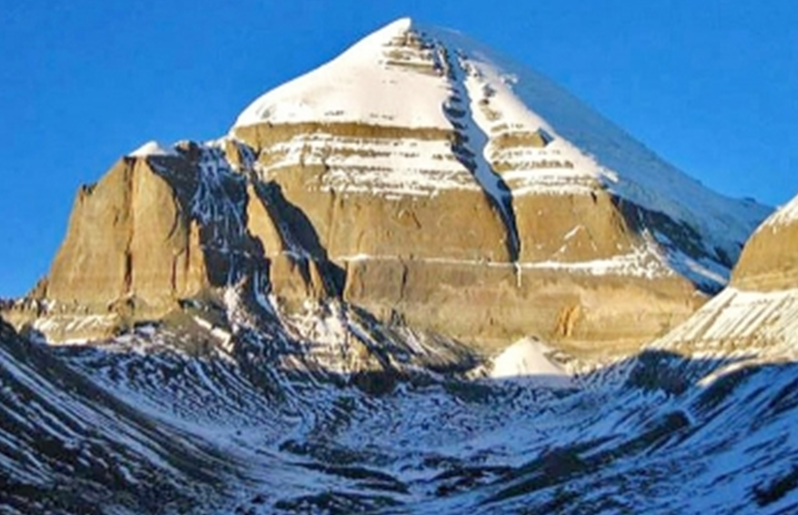Mansarovar: Lipulekh and Demchok routes
This is a collection of articles archived for the excellence of their content. Readers will be able to edit existing articles and post new articles directly |
Mansarovar: Lipulekh and Demchok routes
Safe and Less Strenuous Pilgrimage to Mansarovar-Via Ladakh
By Virendra Sahai Verma, Friday, October 18, 2013 Leh:
Since time immemorial Kailash Mansarovar pilgrimage (Yatra) is revered as the holiest of all by Hindus and Buddhists. Scores of people aspire to do ‘parikrama’ and holy dip to attain paradise or simply meditate on the lakeshore in exquisite and spiritual beauty. Ministry of External Affairs organizes pilgrimage of 18 batches of 60 each from 09 June to 09 September every year.
Lipulekh route
However, the prohibitive cost of about Sixty/Seventy thousand per head and 8 days of strenuous trek over Pithoragarh-Dharchula-Malpa-Lipulekh-(16730 feet) in Uttarakhand enables only well to do and physically fit to undertake the pilgrimage. In August 2013 Government finally cancelled remaining batches due to “disruption of roads, bridges & tracks” in the wake of torrential rains, cloud burst and consequent flash floods in Uttarakhand. Earlier on 18 August 1998 nearly 200 persons including 60 pilgrims perished in cloud bursts when entire village of Malpa enroute to Lipulekh was washed away. The traditional route via Lipulekh is most hazardous.
Recent studies state that Uttarakhand is highly prone to landslides due to poor geology and extreme steep topography. Total duration of proper Yatra is 26 days; 11 days are taken by Kailash and Mansarovar Parikramas. (with option of on foot and by coach). Two ways itinerary includes 8 days trek on foot covering 118 km and 8 days by coach. In the whole Yatra, 7 km walk on 9th day from Navidhang to Lipulekh and 9 km on 8th day from Kalapani to Navidhang are “treacherous at the best of times.”
For centuries there was constant exchange of pilgrims and traders to Kailash-Mansarovar through number of passes in Ladakh, Himachal and Uttarakhand. During last sixty years motor able roads have been built on both sides of India-China border. These are available to people as safe and much less strenuous and more economical pilgrimage routes.
Demchok Route
This route through Eastern Ladakh and Western Tibet is though longest in terms of distance but is least strenuous and economical. Entire pilgrimage and logistics are based on motor able roads. After acclimatization at Leh the group would travel in comfortable buses passing through Chang la (Pass) ( 17350 Ft) to Tangtse village. The pass is kept open by Army throughout the year. The enchanting drive along Pangong Tso (lake) in a moonscape country can only be experienced. Next halt at Chushul has a newly developed airfield. A war memorial in memory of late Major Shaitan Singh, Param Vir Chakra, is not to be missed. In about three days of drive on gravel road from Leh pilgrims would reach at border village of Demchok. After day’s rest and bath at hot sulphur spring and documentation, onward journey would be on Western Highway in Tibet to Gartok which should take not more than two days. Gartok-Purang-Mansarovar is a good one day drive. Entire route, except in the region of Changla pass, is plain high altitude desert. In less than six days from Leh pilgrims would reach their destination. This axis is available round the year but winter from November to May should be avoided. The route is safe, takes least time and economical and logistics are easy being road based. Indian buses should be allowed to travel up to Mansarovar and back. Chinese transport may be utilized for Parikramas around Mount Kailash and Mansarovar.
The potential of Demchok route should not be lost in bureaucratic illusion of sensitivity of nearby Aksai Chin plateau which is disputed and occupied by China. Indian and Chinese differ on the status of Demchok village or nearby Lhari stream, however, both delimit traditional boundary at Demchok. In any case the terrain is flat, diversions are easy, undisputed route could be worked out in this small stretch of land.
It is understood alternative route for Kailash-Mansarovar has been a part of Agenda for some time during bilateral border talks. Government of India may consider facility to visit Tabo ancient monastery in Spiti of Himachal Pradesh as a reciprocal measure. While border negotiations would take time above provides good opportunity to both countries for building up trust at people’s level.
The author is a retired army officer and Honorary Fellow Institute of Chinese Studies Delhi.
